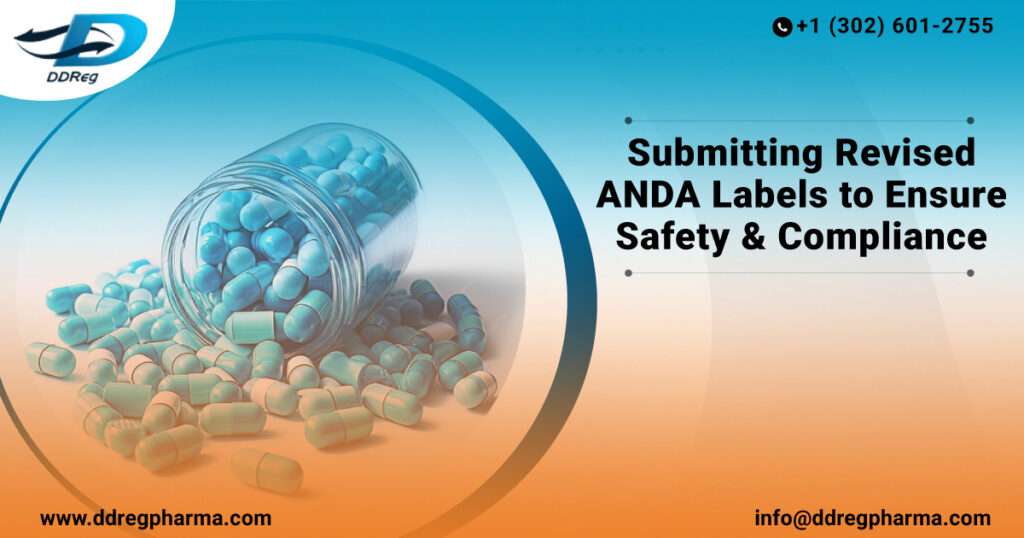Regulatory scrutiny for abbreviated new drug applications (ANDAs) places a strong focus on the accuracy and completeness of ANDA labels. Not only does this provide comprehensive information to healthcare professionals, but it also communicates information on medication usage and potential risks to ensure patients get clear and detailed information. This meticulous review process highlights the important role that accurate labeling plays in ensuring both patient safety and regulatory compliance. Adherence to stringent labeling standards enhances patients understanding but also fosters trust in the regulatory framework to govern drug approvals.
ANDAs should contain information that communicates that the product:
- Has the same active ingredient, administration route, conditions of use, dosage form, strength, and labeling as that in the RLD
- Is bioequivalent to the RLD.
All marketing authorization holders for ANDAs and new drug applications (NDAs) are obligated in ensuring that the label of their products is accurate, not misleading, and does not communicate false information. Typically, generic products should have the same labeling as reference listed drug (RLD) products except for changes that are required due to differences approved under “suitability petition” or because the generic and RLD products are products/distributed by different manufacturers.
If new information becomes available and is deemed misleading, inaccurate, or false, then the holder must proactively update the product labeling. The approved RLD labeling is revised by the application holder which is accomplished through the submission of information under the appropriate reporting category. In the United States, ANDA holders should updated the labeling once the US FDA has approved the changes for the corresponding RLD.
To ensure that the generic drug continues to be as safe and effective as the corresponding RLD, prompt revision, submission to the agency and implementation of revised ANDA labelling is important. FDA may withdraw approval of an ANDA if the Agency finds that the labelling for the drug product that is the subject of the ANDA is no longer consistent with that for the RLD. To obtain the information applicants should monitor Drugs@FDA, LISTSERVs or FDA’s Division of Freedom of Information.
How to submit revised labeling
The US FDA issued a guidance document, “Revising ANDA Labeling Following Revision of the RLD Labeling” to provide marketing authorization holders with recommendations on how they should update their labels following the revisions of approved labeling of their RLD. Labelling modifications for ANDA must be submitted in an electronic format through an electronic submission ANDA holders and applicants must submit the corresponding labelling papers in the relevant modules and sections. According to the guidance document, the submissions should include:
- Form FDA 356h
- Cover letter
- Patent and exclusivity statement in cover letter and/or eCTD submission, as needed
- Revised labelling
- A side-by-side comparison of the proposed ANDA labelling with the approved labelling of the RLD with all differences annotated and explained, as described in § 314.94(a)(8)(iv)
Types of Submissions
The submission of an uncalled labelling amendment from the applicants end during the review cycle might impact the goal date. The applicant must ensure timely submission of revised labels with ANDA itself. Following are the types of submissions:
Unapproved ANDA’s: Applicants must adhere to the procedure outlined in 21 CFR 314.96 and suggestions in the FDA guidance for industry ANDA Submissions – Amendments to Abbreviated New Drug Applications Under GDUFA (July 2018).
Tentatively approved ANDA’s: Applicants should submit labelling revisions in an amendment to the tentatively approved application in order to comply with RLD labelling updates. Furthermore, refer to the FDA guidance for industry ANDA Submissions – Amendments and Requests for Final Approval to Tentatively Approved ANDAs (September 2020) for recommendations on the timing and content of amendments to tentatively approved ANDAs to facilitate submission in a timely manner and enable final approval on the earliest date on which the ANDA may lawfully be approved based on patent and/or exclusivity protections.
Approved ANDA’s: Refer to section 314.70 of 21CFR for appropriate reporting category to submit the revised labelling for ANDA.
Other Considerations
When revising the labels there are important aspects to remember:
- The label should conform to the approved labelling of RLD because it serves as the basis for generic drug approval.
- If there are any revisions to the RLD labelling, the supplements or amendments must be made to update the generic drug labelling.
- Avoid relying solely on the publicly available data and check Drugs@FDA for accurate insights.
Conclusion
The US-FDA guidance streamlines the process for keeping generic drug labelling up-to-date and consistent with RLD updates. It ensures that patients receive accurate and relevant information about their medications.
DDReg has assisted its clients in the US market by offering comprehensive regulatory services for ANDAs and generic product development. Reach out to DDReg for expertise on Regulatory Due Diligence – DDReg Pharma and read more from experts about ANDA Rejections here: Legibility checks to avoid ANDA rejection – DDReg Pharma

